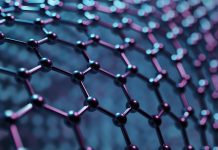The discoveries in nanomaterial phase engineering present exciting prospects for creating effective catalysts, which in turn can play a vital role in advancing clean energy efficiency solutions and sustainable development
A pioneering achievement has been unveiled by an international consortium led by the City University of Hong Kong (CityU), marking a substantial advancement in the essential technical expertise needed to address global environmental challenges.
The breakthrough, featured in Nature’s scientific journal, revolves around creating an exceptionally effective electrocatalyst designed to improve hydrogen production via electrocatalytic water splitting.
The world urgently requires cleaner energy sources, yet the difficulties in transitioning away from fossil fuels to embrace more sustainable energy alternatives are substantial.
“Hydrogen generated by electrocatalytic water splitting is regarded as one of the most promising clean energies for replacing fossil fuels in the near future, reducing environmental pollution and the greenhouse effect,” said Professor Zhang Hua, Herman Hu Chair Professor of Nanomaterials at CityU, who is spearheading the research.
Professor Zhang collaborated with Professor Anthony R. J. Kucernak from Imperial College London and researchers from various universities and research institutes in Hong Kong, mainland China, Singapore, and the UK.
Highly efficient catalysts: Clean energy efficiency
The significant breakthrough in their research, led by CityU, involves the creation of innovative catalysts using transition-metal dichalcogenide (TMD) nanosheets as a foundation. This advancement greatly enhances efficiency and stability during the electrocatalytic hydrogen evolution reaction (HER), a crucial step in the water electrolysis process for hydrogen production.
For years, the team has been working on improving the performance of the HER process by altering the crystal structure of nanomaterials. While unconventional-phase TMD nanosheets show promise as catalyst supports, creating sufficiently pure sheets for HER has been challenging.
Sustainable Development
In this study, Professor Zhang’s team has devised a novel technique to produce high-quality unconventional-phase TMD nanosheets with high-phase purity. Additionally, they have examined how different crystal phases affect the growth of noble metals on these TMD nanosheet supports.
From a technical perspective, they discovered that the 2H-phase template encourages the precise growth of Pt nanoparticles, while the 1T′-phase template promotes the formation of single-atom Pt dispersion (s-Pt). The resulting s-Pt/1T′-MoS2 combination acts as an extremely efficient catalyst for the HER process, demonstrating its capability to operate continuously for 500 hours in a water electrolysis system.
This suggests that 1T′-TMD nanosheets can be valuable catalyst supports.
Pivotal in promoting cleaner energy sources
“We will develop more efficient catalysts based on this finding and explore their applications in various catalytic reactions,” said Dr Shi Zhenyu, a postdoctoral researcher in CityU’s Department of Chemistry and the paper’s first author.
These discoveries broaden the possibilities of manipulating nanomaterials through phase engineering, opening up new avenues for creating highly effective catalysts. This advancement can be pivotal in promoting cleaner energy sources and fostering sustainable development.














